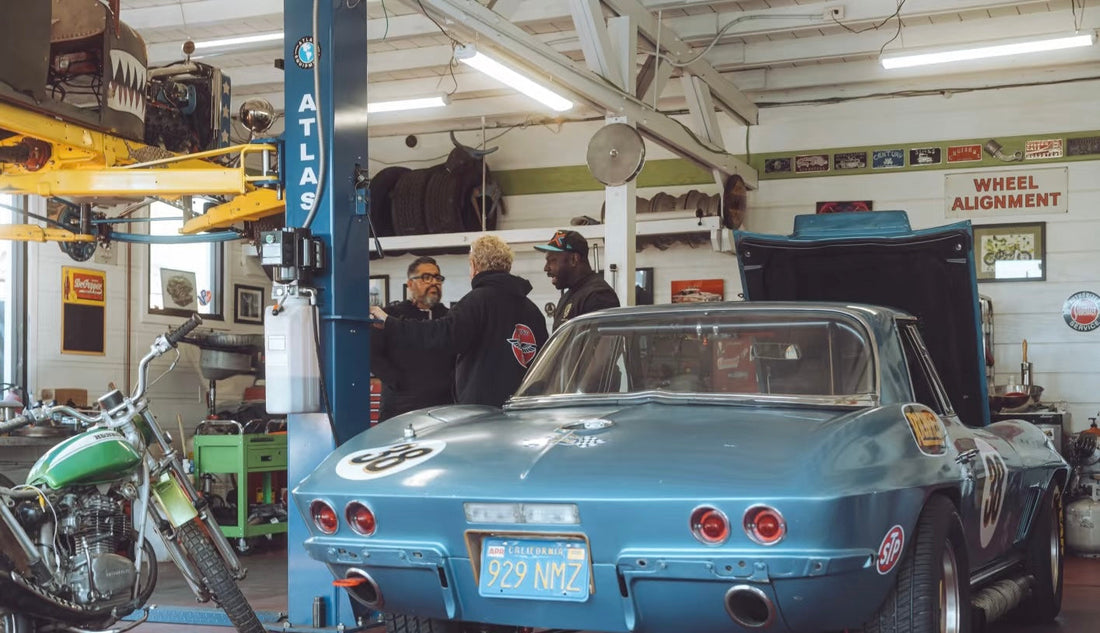
Why the Vintage Aesthetic Still Resonates in a Digital World?
A Look Into the Past That Keeps Defining the Future
Vintage aesthetic isn’t just about wearing old clothes or decorating your apartment with grandma’s lamp. It’s a language—visual, tactile, emotional—that tells stories from another time, while offering a quiet resistance to the fast, digital now.
From fashion and photography to interiors and music, vintage has become a cultural thread that stitches together memory, taste, and identity.
But what exactly is the vintage aesthetic? Where does it come from? Why has it become such a global obsession—and what does it say about who we are today?
What Does “Vintage” Actually Mean?
Technically speaking, “vintage” refers to anything that’s 20 years or older, but less than 100. Once it crosses the century mark, we usually call it “antique.” So yes, the 1990s now count as vintage—Y2K aesthetics included.
But culturally, vintage is less about exact dates and more about emotional resonance. A worn-in denim jacket from the ’70s. A rotary phone in pastel yellow. A grainy film photo with light leaks. These aren’t just objects; they’re vessels of texture, mood, and meaning.
Where Did the Vintage Aesthetic Come From?
The term "vintage" originally belonged to wine, describing the year a grape was harvested. Over time, it extended to clothing, furniture, and lifestyle to imply something aged with value—like character, quality, and craftsmanship.
The cultural movement started picking up in the 1960s–70s, when young people began shopping second-hand not out of necessity, but rebellion. They wanted to dress against the mainstream, finding beauty in the past rather than mass-produced trends.
It grew from subculture to mainstream during the 1990s and exploded with the arrival of digital platforms like Pinterest, Tumblr, and now TikTok.
Why Are So Many People Drawn to Vintage Today?
In a world flooded with automation, algorithms, and short-term trends, vintage offers something different: slowness, texture, and history.
It’s personal, imperfect, and refreshingly unbranded.
People love vintage because it:
- Brings nostalgia, even for decades they didn’t live through
- Feels more sustainable than fast fashion
- Allows for individual expression
- Carries cultural depth that modern minimalism sometimes lacks
In short, vintage is both a style and a statement.
The Spirit Behind the Aesthetic
At its core, the vintage aesthetic celebrates:
- Craft over convenience
- Sentiment over perfection
- Timeworn beauty over glossy newness
It’s a quiet rebellion that favors emotion over efficiency. It romanticizes the analog, the tactile, the imperfect—reminding us that beauty doesn’t always have to be new to be meaningful.
What Defines the Vintage Aesthetic Today?
While "vintage" is vast, a few signature items and fabrics stand out:
1. Vintage Tees
Soft, faded, often single-stitch cotton. Sometimes cracked prints. Think old tour merch or 90s sportswear.
(You can explore our modern take on this timeless essential here.)
2. Denim with History
High-waisted, rigid, often made from selvedge or raw cotton denim. Fades naturally over time. Levis 501s are the holy grail.
3. Workwear and Military Jackets
Chore coats, M-65 field jackets, coveralls—utility meets silhouette. Most are made from thick twill, canvas, or wool blends.
4. Silk Blouses and Slips
Especially from the 1930s–90s. Bias cuts, subtle lace, and creamy silk textures tell stories of both strength and softness.
5. Corduroy, Velvet, and Worn Leather
All fabrics that show their age beautifully. Texture is king.
Every thread holds a tale—from postwar Americana to Japanese reworks of French workwear. Even the smallest details, like buttons or pocket stitching, can carry historical significance.
Why Is Vintage More Accessible in the U.S. Than Abroad?
In the U.S., there’s an abundance of second-hand supply, thanks to decades of mass production, cultural preservation, and garage sales. Thrift stores and flea markets are more common, and many vintage items haven't been exported or destroyed.
Elsewhere, especially in Asia or Europe, these same items become scarce and symbolic—making them more expensive due to import costs, rarity, and demand.
So when vintage items are sold internationally, what’s being marketed isn’t just a shirt or a jacket. It’s cultural export, it’s story, it’s lifestyle. And often—it’s nostalgia made wearable.
How Has Vintage Evolved Today?
Vintage aesthetic is no longer about hoarding old clothes; it’s about reinterpreting the past through a modern lens. People use vintage pieces as anchors, then remix with modern tailoring, materials, and tech.
Designers today are integrating vintage references into their products. Brands now offer tools like our custom design studio to let you personalize your own take on timeless garments.
And consumers? They’re becoming curators—mixing decades, genres, and textures to form identities beyond the trend cycle.
Want to Dive Deeper Into Vintage and Textile Culture?
We’ve got you covered. Read more stories on fabric, design, and care in our textile journal, or explore our timeless basics redesigned for the modern wearer here.
Vintage isn’t just a look. It’s a lens. And through it, we don’t just see the past—we see who we want to become.


